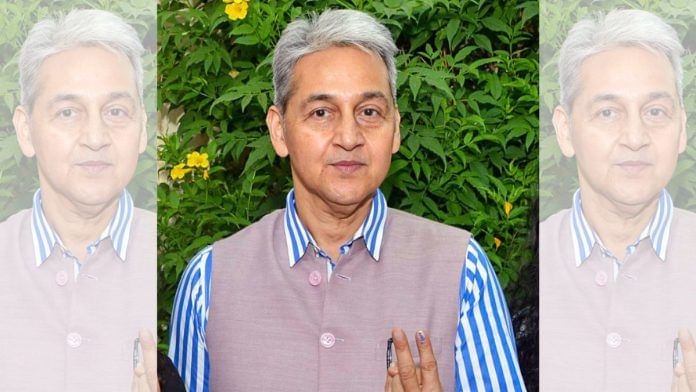New Delhi: Almost two years after he was sent to Rajasthan as chief secretary, superseding six officers who were in the running for the top post, senior IAS officer Sudhansh Pant was suddenly brought back to the Centre last week as secretary in the Ministry of Social Justice and Empowerment.
The tenure of a serving chief secretary being cut short, and they being brought back to the Centre suddenly is a rare occurrence. Before this, in 2014, in Rajasthan again, Rajiv Mehrishi was brought to the Centre and his tenure as CS cut short. Mehrishi was then made the finance secretary.
According to sources in the Rajasthan government, the move to bring Pant back to the Centre came after months of turf wars between him and the Chief Minister’s Office (CMO), following which the Centre finally intervened this month, and brought Pant back to the Centre, sending V. Srinivas, a 1989 batch officer from the Rajasthan cadre as the new CS.
“Given that the chief minister has little administrative experience, the Centre had repatriated Pant to Rajasthan and appointed him chief secretary even though at the time, there were six other officers senior to him in the running for the post,” a senior officer said on condition of anonymity. “That was because the Centre trusted him completely, and thought he would function as a sounding board for the new CM.”
Pant’s appointment had created a stir within the state bureaucracy with many of the superseded seniors registering their resentment over having to report to their junior, the officer added.
According to multiple sources, the dynamic between the CMO and Pant became thorny as the latter became a power centre unto himself. “There was an impression within the government, and even among the public that it was the CS, not the CM, who was running the show. All policy and administrative decisions were being taken by him (Pant)… The CM was considered a lightweight, while Pant is like a technocrat, who knew what needs to be done, and was seen as the PMO’s man,” another officer said. “This obviously dampened the new CM’s stature in the eyes of his officers. Anyway, everyone knew that he’s not just a first-time CM, but also a first-time MLA.”
Things began to change after the transfer of the CM’s principal secretary, Alok Gupta (who was close to Pant) in June this year. After Gupta’s exit, Additional Chief Secretary in the CMO, Shikhar Agarwal, a 1993 batch IAS officer, began to assert the CMO’s power, thereby sidestepping the CS, sources said.
“For the last six months, things became tough for Pant as the files of transfers, postings, disciplinary actions, etc., stopped going to the CS,” the second officer quoted above said. “Pant was bypassed in nearly everything.”
After months of tension, the Centre finally intervened by once again sending a trusted officer, Srinivas, to handle the situation. “Srinivas was nowhere in the running for the post. There were at least three claimants for the position in Rajasthan itself. But the Centre has chosen to continue the trend of sending its trusted officer to states,” the officer said.
In Modi 2.0, several officers occupying top administrative positions in BJP-ruled states—that is, chief secretaries—are those who worked for an extended period under the Modi government since 2014.
If Modi 1.0 was about overhauling the bureaucracy at the Centre to carry out his vision, Modi 2.0 has been about indirectly steering the administration in BJP-ruled states.
Notably, Srinivas will simultaneously hold the position of the resident commissioner of Rajasthan in Delhi.
(Edited by Viny Mishra)
Also read: ‘The most powerful civil servant in UP’—why SP Goyal emerged as Yogi’s No. 1 choice for chief secy






